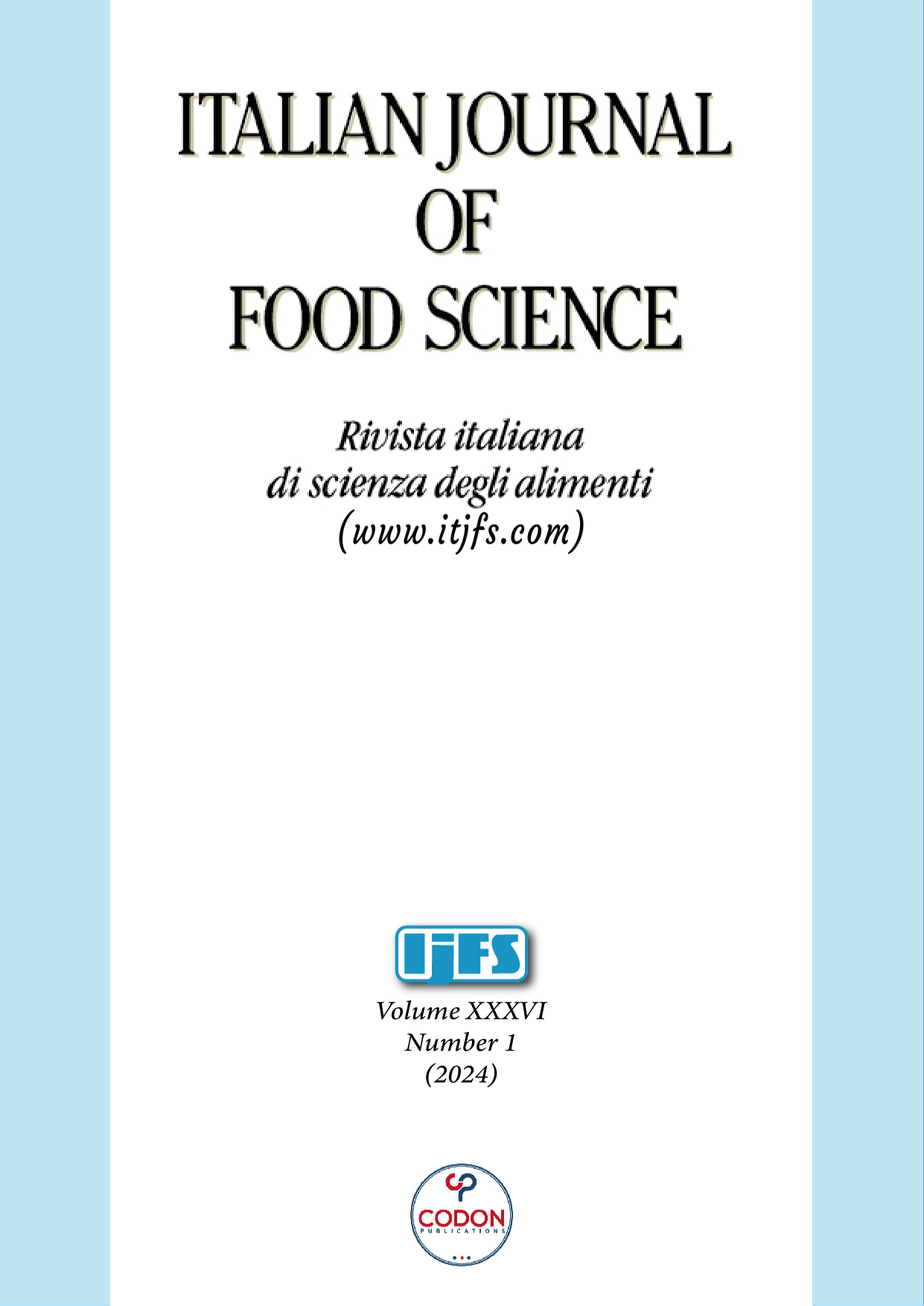Estimation of betalain content in beetroot peel powder
Main Article Content
Keywords
beetroot peels, natural color, reduction of waste, sun-drying, betalain content beetroot powder
Abstract
This study explores the economic benefits of utilizing beetroot peels as a source of natural color extraction, with a focus on reduction of waste. It was determined through rigorous experimentation that sun-drying at a controlled temperature of 22°C emerged as the optimal and most cost-effective method for preserving betalain content in peels. Furthermore, water was identified as the preferred solvent for extraction of betalain, exhibiting both higher yield and lower cost, compared to ethanol. The resulting beetroot powder demonstrated a stable pH range of 6.1–6.6, rendering it well suited for a diverse range of food applications. These findings emphasize the potential of beetroot peels as a valuable and sustainable source of natural colorants, with significant implications for the food and related industries.
References
Aykın-Dinçer E., Güngör K.K., Çăglar E. and Erba¸s M. 2021. The use of beetroot extract and extract powder in sausages as natural food colorant. Int J Food Eng. 17: 75–82.
Bunkar D.S., Anand A., Kumar K., Meena M., Goyal S.K. and Paswan V.K. 2020. Development of production technology for preparation of beetroot powder using different drying methods. Ann Phytomed Int J. 9(2): 293-301. 10.21276/ap.2020.9.2.29
Chhikara N., Kushwaha K., Sharma P., Gat Y. and Panghal A. 2019. Bioactive compounds of beetroot and utilization in food processing industry: a critical review. Food Chem. 272: 192–200.
Clifford T., Howatson G., Daniel J., West D.J. and Stevenson E.J. 2015. The potential benefits of red beetroot supplementation in health and disease. Nutrients. 7: 2801–2822.
Delgado-Vargas F., Jiménez A.R. and Paredes-López O. 2000. Natural pigments: carotenoids, anthocyanins, and betalains—characteristics, biosynthesis, processing, and stability. Crit. Rev. Food Sci. Nutr. 40: 173–289. 10.1080/10408690091189257
Deng Q., Zinoviadou K.G., Galanakis C.M., Orlien V., Grimi N., Vorobiev E. et al. 2015. The effects of conventional and non-con-ventional processing on glucosinolates and its derived forms, iso-thiocyanates: extraction, degradation, and applications. Food Eng Rev. 7(3): 357–381. 10.1007/s12393-014-9104–9
Deshmukh R.K. and Gaikwad K.K. 2022. Natural antimicrobial and antioxidant compounds for active food packaging applications. Biomass Conversion and Biorefinery, 2022(1): 1–22. 10.1007/S13399-022-02623-W
Gokhale V.S. and Lele S.S. 2014. Betalain content and antioxidant activity of Beta Vulgaris: effect of hot air convective drying and storage. J Food Proc Preserv. 38: 585–590.
Herbach K.M., Stintzing F.C. and Carle R. 2006. Stability and color changes of thermally treated betanin, phyllocactin, and hylocerenin solutions. J Agric Food Chem. 54: 390–398. 10.1021/jf051854b
Kaur K. and Singh A.K. 2014. Drying kinetics and quality characteristics of beetroot slices under hot air followed by microwave finish drying. Afr J Agric Res. 9(12): 1036–1044.
Liliana C. and Oana-Viorela N. 2020. Red beetroot: composition and health effects—a review. J Nutr Med Diet Care. 6:43. 10.23937/2572-3278.1510043
Lu W., Shi Y., Wang R., Su D., Tang M., Liu Y. and Li Z. 2021. Antioxidant activity and healthy benefits of natural pigments in fruits: a review. Int J Mol Sci. 22(9): 4945. 10.3390/ijms22094945
Miguel, M.G. 2018. Betalains in some species of the Amaranthaceae family: a review. Antioxidants. 7(4): 53. 10.3390/antiox7040053
Nirmal N.P., Mereddy R. and Maqsood S. 2021. Recent developments in emerging technologies for beetroot pigment extraction and its food applications. Food Chem. 356(Mar): 129611. 10.1016/j.foodchem.2021.129611
Ravichandran K., Saw N.M.M.T., Mohdaly A.A.A., Gabr A.M.M., Kastell A., Riedel H., et al. 2013. Impact of processing of red beet on betalain content and antioxidant activity. Food Res Int. 50(2): 670–675. 10.1016/j.foodres.2011.07.002
Sharma M, Usmani Z, Gupta VK. and Bhat R. 2021. Valorization of fruits and vegetable wastes and by-products to produce natural pigments. Crit Rev Biotechnol. 41(4): 535–563. 10.1007/s13399-020-01267-y
Shuaibu B.S., Aremu M.O. and Kalifa U.J. 2021. Chemical composition and antioxidant activities of beetroot peel. Afr J Eng Environ Res. 2(1): 62–73.
Udonkang M.I., Inyang I.J., Ukorebi A.N., Effiong F., Akpan U. and Bassey, I.E. 2018. Spectrophotometry, physiochemical properties, and histological staining potential of aqueous and ethanol extracts of beetroot on various tissues of an albino rat. Biomed Hub. 3(3): 1–10. 10.1159/000492828
Vilas-Boas A.A., Pintado M. and Oliveira A.L.S. 2021. Natural bioactive compounds from food waste: toxicity and safety concerns. Foods. 10(7): 10071564. 10.3390/foods10071564
Zia P., Sunita M. and Sneha S. 2021. Extraction of natural colour from beet root (Beta vulgaris) its phytochemical analysis and antibacterial activity. EAS J Nutr Food Sci. 1873(4): 3–8. 10.36349/easjnfs.2021.v03i04.002



